Hybrid Arch Repair, Part 1
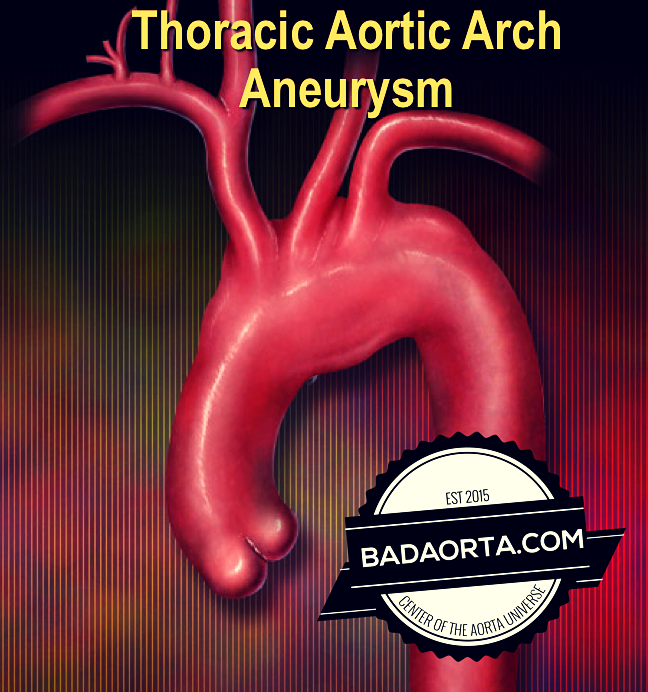 Welcome to Aortic Academy at BadAorta.com. We will be discussing aneurysms and dissections of the aorta.
Welcome to Aortic Academy at BadAorta.com. We will be discussing aneurysms and dissections of the aorta.
The Aortic Academy will cover a range of topics and lessons and is geared to both patients and physicians with varying levels of knowledge about the aorta.
Be sure to check out my Twitter feed @DrWheatley for additional information on Aortic Academy.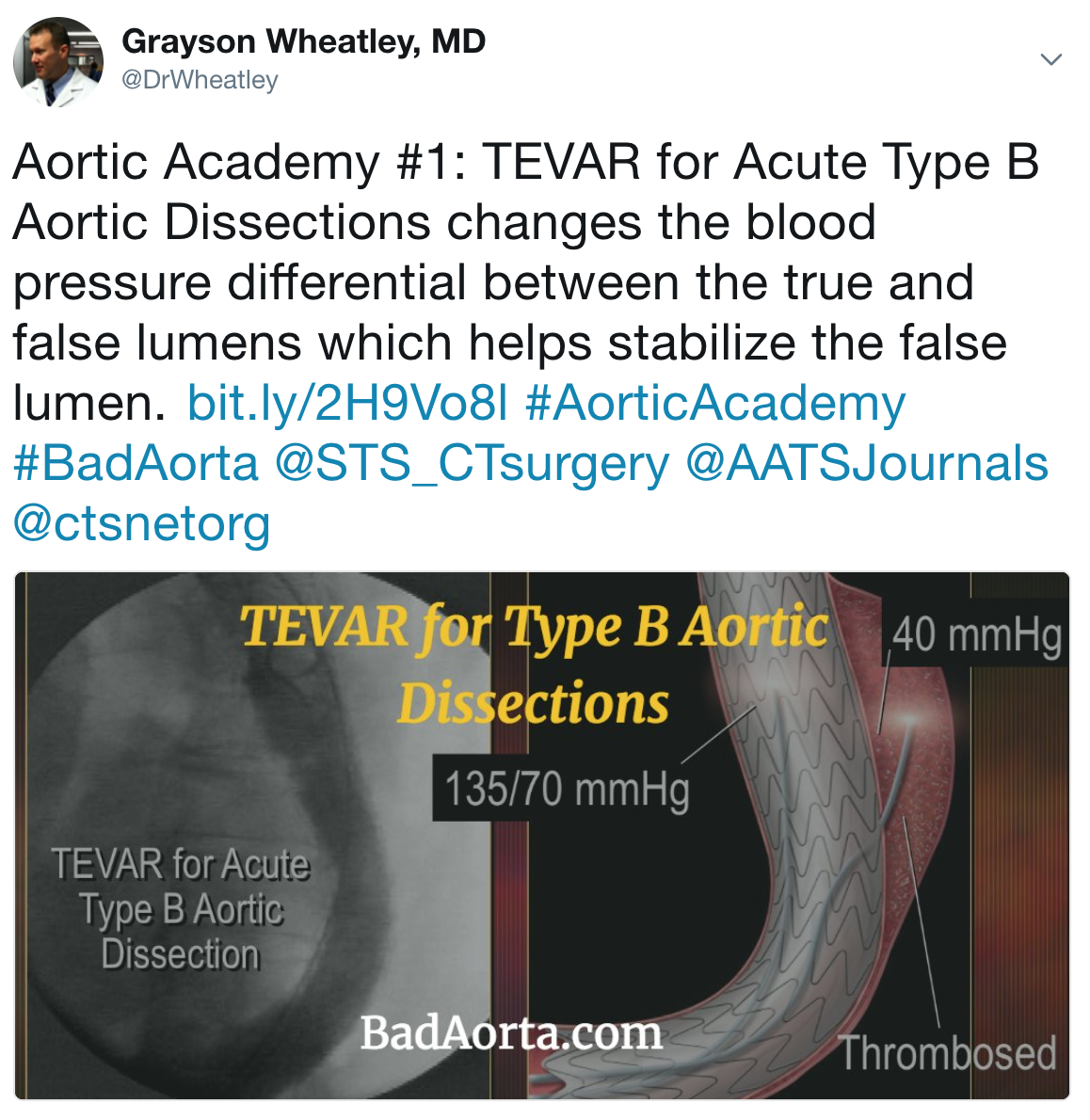
Aneurysms and Dissections of the Aortic Arch
The aorta is divided into several anatomic sections. You can refer to the Aortic Atlas on BadAorta.com.
The ascending aorta (and aortic root) are the portions of the aorta closest to the heart and are located in the chest.
The aortic arch connects the ascending aorta and the descending aorta. The arch of the aorta is at the apex of the aorta and blood flow to the brain and upper extremities originate from the aortic arch. These vessels are called the great vessels.
Any interruption of blood flow to the great vessels originating off the aortic arch could lead to a stroke (cerebrovascular accident or abbreviated as “CVA”).
The aortic arch is one of the most challenging regions of the aorta to treat because of the origin of blood flow to the great vessels. Any therapy to the aortic arch must take into consideration the blood flow to the brain.
Types of Problems in the Aortic Arch
The aortic arch can develop many types of problems.
Aneurysms can originate in the aortic arch. As many of you know, there are different types of aneurysms. The most common type is called a fusiform aneurysm and looks like a localized swelling of the entire segment of aorta.
Saccular aneurysms refer to an eccentric enlargement, looking like a bubble on the side of the aorta.
More importantly, aneurysms originating in the ascending aorta can extend into the aortic arch. When this occurs, concomitant treatments to the ascending aorta and aortic arch are needed - which makes the procedure more involved and complicated.
Likewise, aneurysms of the descending thoracic aorta can extend into the aortic arch.
Aortic dissections, which are a tearing apart of the layers of the wall of the aorta, can also affect the aortic arch. Sometimes the dissection starts in the ascending aorta and extends into the aortic arch and descending thoracic aorta. This is classified as an acute Stanford Type A Aortic Dissection.
Stanford Type A aortic dissections are a surgical emergency and require emergent open heart surgery to replace the ascending aorta. Sometimes, the aortic arch will be replaced in the same setting if there is an associated aneurysm of the aortic arch or if the dissection originated in the aortic arch.
When just the ascending aortic dissection is treated, the chronic aortic dissection in the aortic arch can degenerate, or become aneurysmal over time.
Treatment Options for the Aortic Arch
There are two types of treatments to the aortic arch.
1) An open arch replacement involving open heart surgery and hypothermic circulatory arrest.
2) Hybrid Arch replacement without hypothermic circulatory arrest.
A hybrid arch replacement is a “less-invasive” approach, meaning that this procedure frequently does not involve cardiopulmonary bypass or hypothermic circulatory arrest.
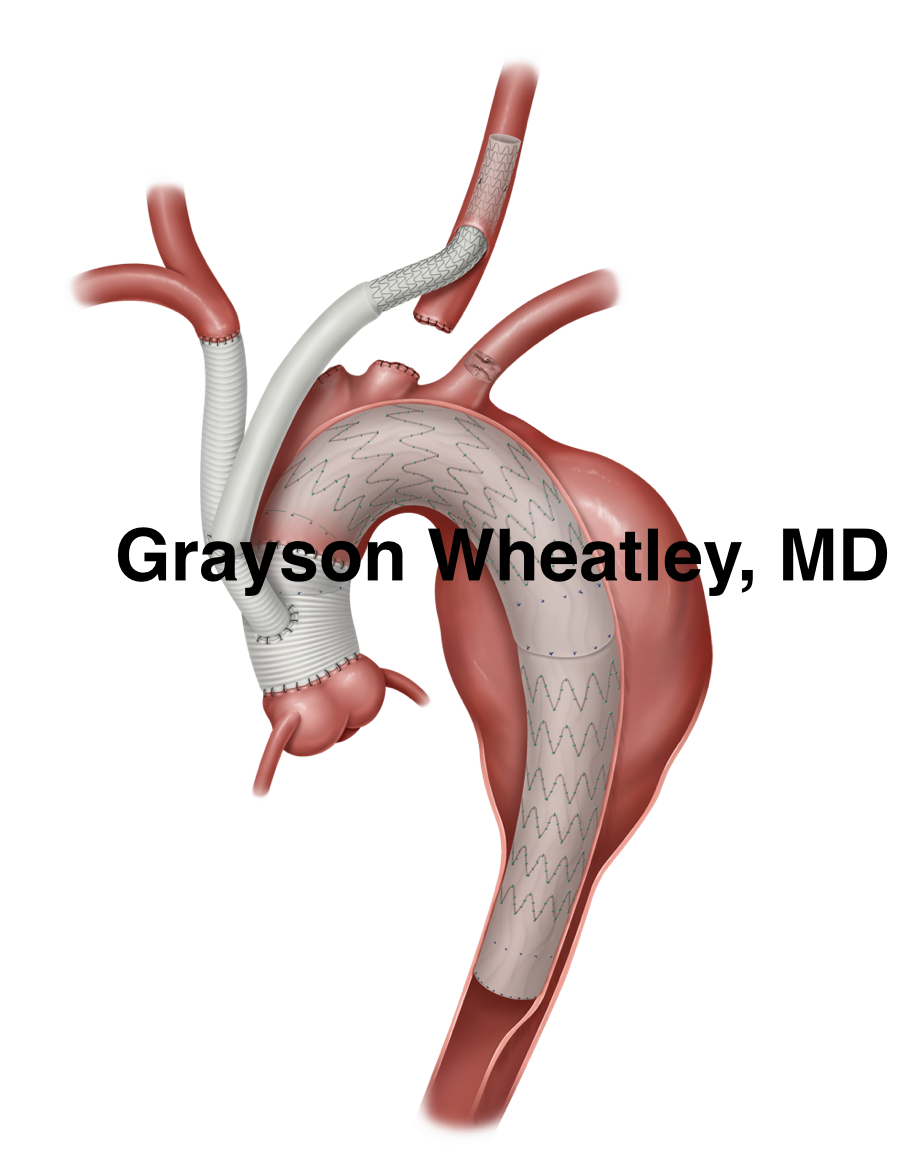 It is still invasive, meaning that the chest still needs to be opened, but the less invasive component refers to less “metabolic insult” to the patient.
It is still invasive, meaning that the chest still needs to be opened, but the less invasive component refers to less “metabolic insult” to the patient.
Many studies have been performed which compare hybrid arch repair versus open arch replacement.
Overall, the procedural risks are similar in terms of complications such as stroke, pneumonia and renal failure were similar between the two procedures.
The length of hospital stay was slightly shorter in the hybrid arch repair group and the total recovery period was also shorter in hybrid arch repair patients.
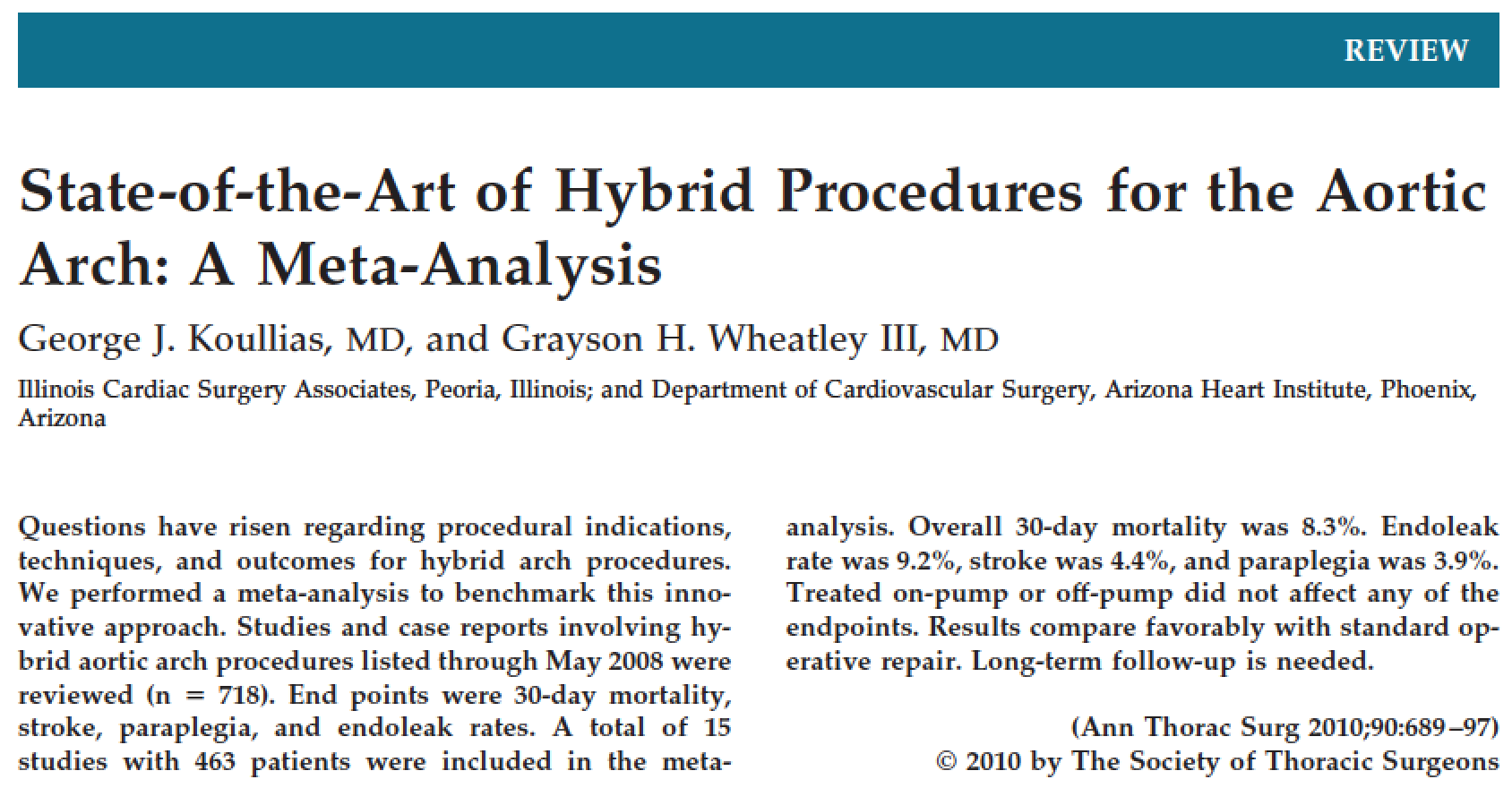 There was an increased risk of reintervention in the hybrid arch repair group, meaning that patients undergoing hybrid arch repair were susceptible to having another procedure - usually endovascular - to treat the arch aneurysm or dissection.
There was an increased risk of reintervention in the hybrid arch repair group, meaning that patients undergoing hybrid arch repair were susceptible to having another procedure - usually endovascular - to treat the arch aneurysm or dissection.
The hybrid arch repair is usually performed in a staged fashion - meaning 2 separate procedures.
For the first stage of the procedure, the chest is opened using a sternotomy (open the breast bone) and the great vessels are bypassed using surgical grafts sewn into the proximal aorta. This re-routes blood flow to the brain from the aortic arch to the ascending aorta.
This re-routing of blood flow allows us to exclude the aortic arch with an aortic stent graft instead of replacing the aortic arch using hypothermic circulatory arrest.
The second stage of the hybrid arch procedure involves an endovascular aortic stent. The aortic stent graft is delivered from the femoral vessels without the need for re-opening the chest.
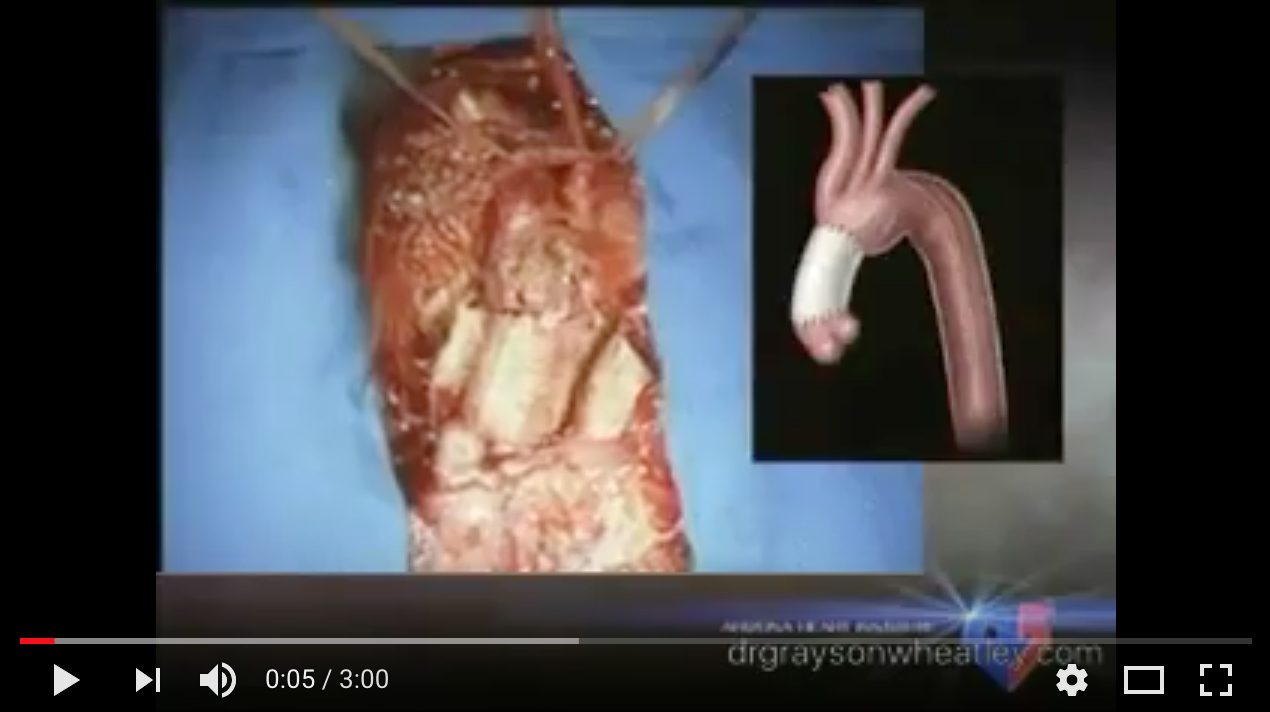 Here is a video of me performing a hybrid arch repair as a combined, single-stage procedure.
Here is a video of me performing a hybrid arch repair as a combined, single-stage procedure.
Summary
Hybrid arch repair is a less-invasive procedure for treating aortic arch aneurysms and chronic aortic dissections of the aortic arch.
It is usually performed in a staged fashion involving an open chest procedure followed by an endovascular aortic stent to the aortic arch.
The decision to perform a hybrid arch repair versus an open aortic arch replacement is a complex one, and should be individualized for each patient and surgeon.
In future posts, we will be discussing the data regarding hybrid arch repair and discussing the procedure in more detail.
Was this post informative?
Subscribe to my newsletter to learn more about the aorta, its diseases, and how to treat them.
Comments
Share your thoughts below — I try to get back to as many comments as possible.